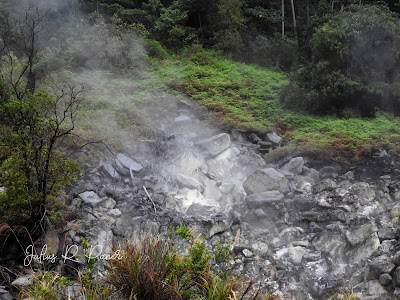On October 28 I was invited by the Local Government Unit of Maco, Davao de Oro and Mountaineering Federation of Southern Mindanao (MFSM) for a talk which aimed at sharing best practices of Sta. Cruz to the stakeholders of Lake Leonard in Maco, Davao de Oro. My subject matter was all about Community-based Ecotourism (CBET) which clearly defines where the direction of Maco Tourism is set. It was the first time I visited the laid back but mining-infested locality situated in the province of Davao de Oro.
I appreciated the management scheme of the tourism in Lake Leonard and thought of it as one of the better CBET attractions in Davao Region. This site should be marketed more so that people would be able to experience, understand and appreciate the real tourism value.
Lake Leonard is for me one of the biggest highland lakes in region XI and it is but fitting to consider it for CBET being located within an Ancestral Domain of the Mansaka Tribe. There is always a touch of heritage here, natural and cultural, that should be recognized by everybody especially local authorities for its appropriate conservation and one key answer to that is ecotourism. The people of Maco for sure have realized how mining was injurious to biodiversity and I hope they realized the need not to welcome any mining-related ideas in the future. Again, the only way to conserve heritage in Maco is ecotourism.
Meanwhile, Lake Leonard serves as jump off site for a trek up Amakan Crater. Having extra time in the morning before my turn for a lecture I trekked the crater despite occasional downpour the whole day. I have heard good stories about this minor hiking attraction particularly its volcanic feature as its ultimate selling point. Amakan Crater is an 8-hectare site that hosts a boiling cauldron of greenish-yellow murk, surrounded by mountain walls. The sulfur content of the lake makes it an acidic water body that should only be seen and photographed. Other activities like bathing can be tried in Arabaton Waterfalls located 30 minutes from the crater.
The trek lasted for more than three hours back and forth and from the trails I witnessed damages brought by logging and mining in the past. Few farmlands still exist but the most vegetation available are sets of invasive plants. Some rivers and creeks are contaminated with mining chemicals. Somehow there are good birds roaming around. In fact I spotted Coletos, Grey-streaked Flycatcher, the endemic Mindanao Hornbill and Everett’s White-Eyes. On the way down I’ve been thinking how in the heck government authorities could restore the lost glory of its biodiversity. I don’t know. I’m not sure.


















